I have been trying out a new painting surface lately, aluminum composite panels. Specifically, I have been using OmegaBond panels. They also come under the name of DiBond from another manufacturer. They are made for signs, constructed of two thin layers of aluminum sandwiched over a polyethylene core. They are made to withstand heat and cold without breaking down and with minimal expansion or contraction. I am starting to see them pop up more and more with artists.
Both the OmegaBond and the DiBond panels have a thin polyester layer on them that can be painted on directly (the DiBond is on one side, the OmegaBond is coated on both sides). When sign companies use them, they will screen on paint over the polyester and it must bond quite well since it has to withstand all kinds of weather conditions. You can also gesso them with oil or acrylic gesso, or adhere canvas or linen to them.
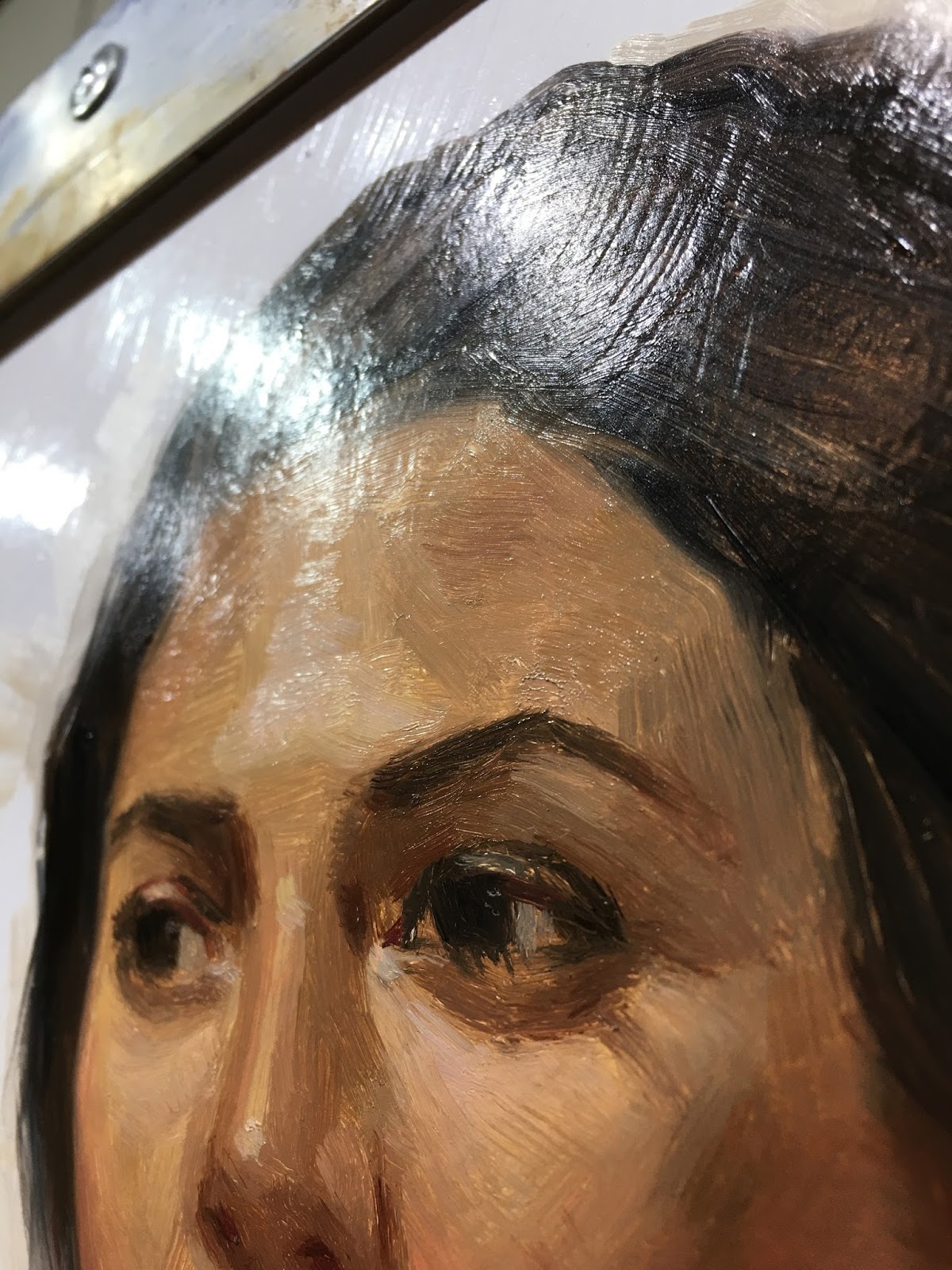 |
| I brushed on some oil based gesso to add texture and test adhesion |
I have been using them for my weekly portrait sittings for the last few months. They are quite slick if you paint directly on the polyester, but the paint seems to bond well. If painting directly on them, you want to use soft brushes, like Rosemary’s Masters Choice line or a sable brush, at least for the first pass.
The Natural Pigments site says the following about preparing the panels.
PREPARING THE PANEL FOR MOUNTING AND PAINTING
Note: Use only the coated side of the panel for painting and mounting.
- Remove the protective film from the coated side slowly and carefully to avoid static build-up.
- Pre-clean the panel surface with ethyl or isopropyl alcohol, using non-colored cloth for best results. It is important not to use solvents, soaps or liquid cleaning materials as they may leave a film residue that can affect adhesion. Additionally, cleaners containing silicone can interfere with adhesion and are not recommended. A 70% solution of isopropyl alcohol is recommended as the only cleaning material.
- Scuff the surface with abrasive paper, preferably using a grain size of 360 grit. Do not grind through the coating to the aluminum metal.
- Remove dust with a lint-free cloth moistened with ethyl or isopropyl alcohol.
I have done some tests with them. Not really all that scientific, or exhaustive, but my initial impression is that they work quite well as painting supports with no real preparation. If you are concerned with the archival nature of them, you will want to test them with your materials to make sure they suit your needs.
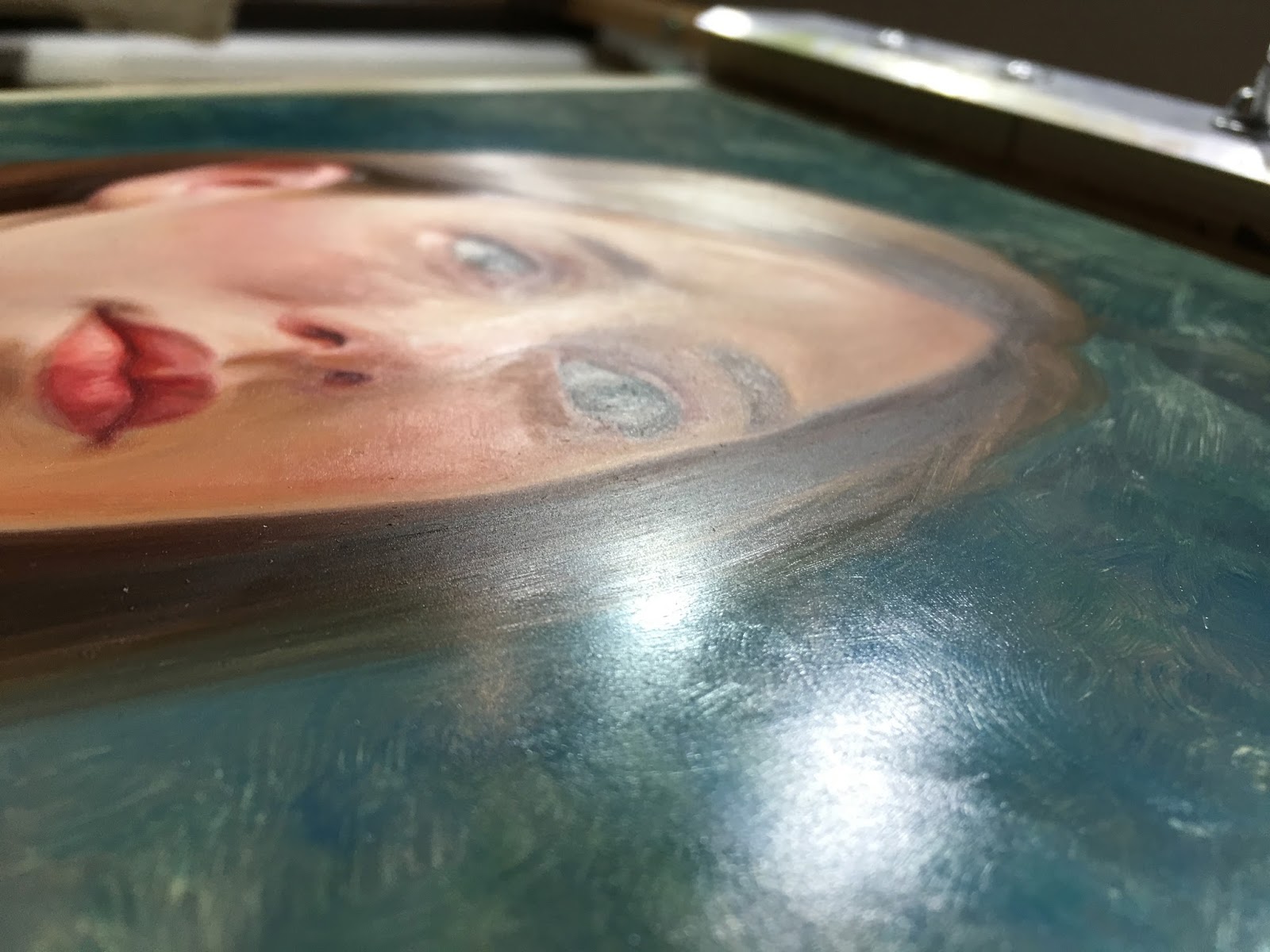 |
| Very smooth surface. No preparation, just painting directly on to polyester surface. |
I have scraped at a few paintings with a palette knife and the paint seems to grip the surface quite well. It can be scraped off, but no easier than on masonite. I have also taken packaging tape and duct tape to a couple dried paintings and ripped it off and no paint came off. Not all that scientific and not a large test base, but it is encouraging so far.
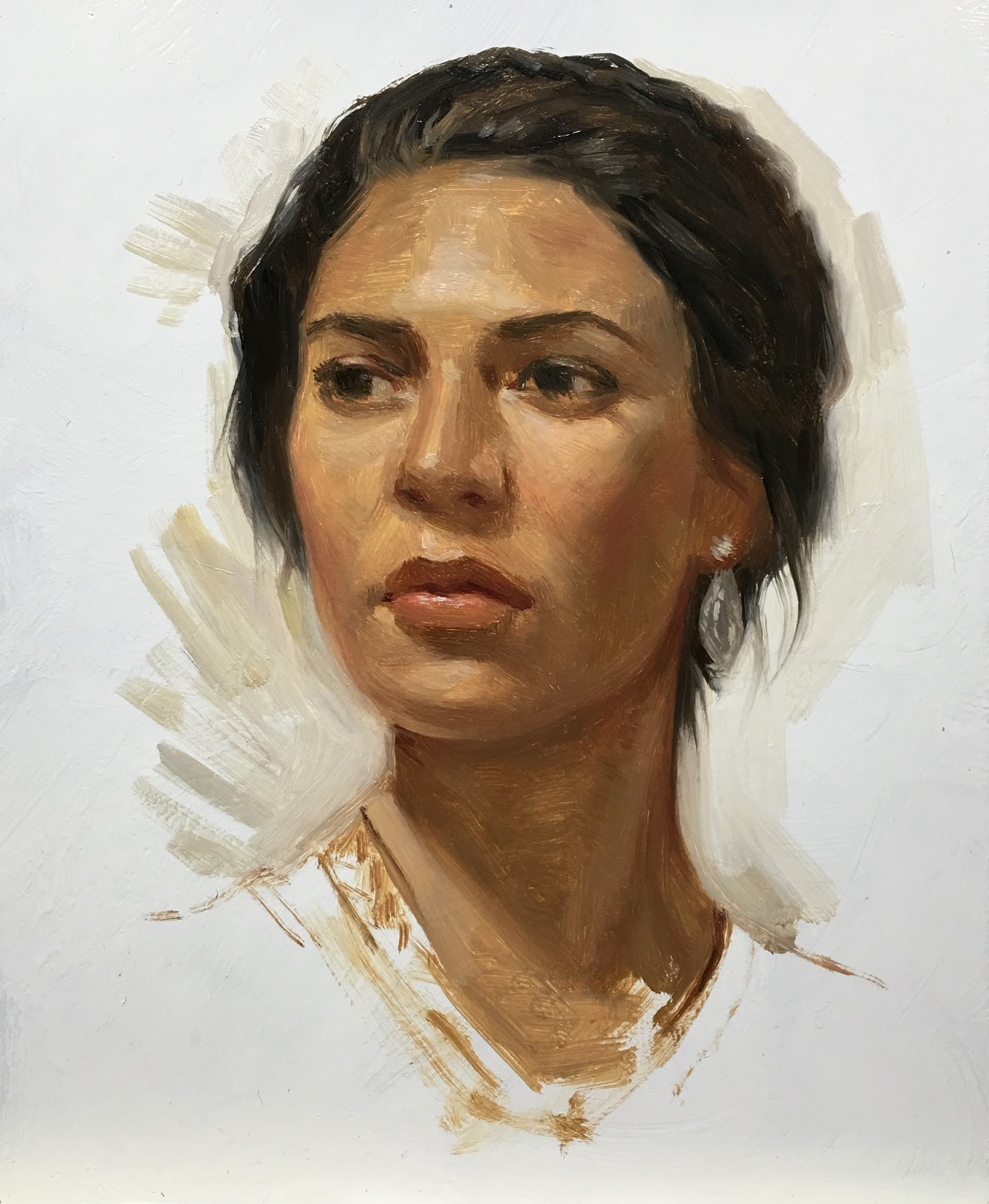 |
| Rebecca – 8″x10″ oil on aluminum panel with oil based primer |
If you are looking for a perfectly smooth surface to work on that is archival and rigid, this might interest you. If you can find a local sign supply company, you can get sheets up to 5′ x 10′. You can also find them at a few art supply stores online.
 |
| Stephanie – 11″x14″ oil on aluminum panel |
*** Full disclosure, my 16 year old son and entrepreneur is selling them on eBay after seeing how much I liked them. I will include a link, but also include a link to Natural Pigments which sells plain panels as well as panels with linen.
Lastly, here is a time lapse of the painting above for fun:
Thanks for giving this post a read!
Howard Lyon


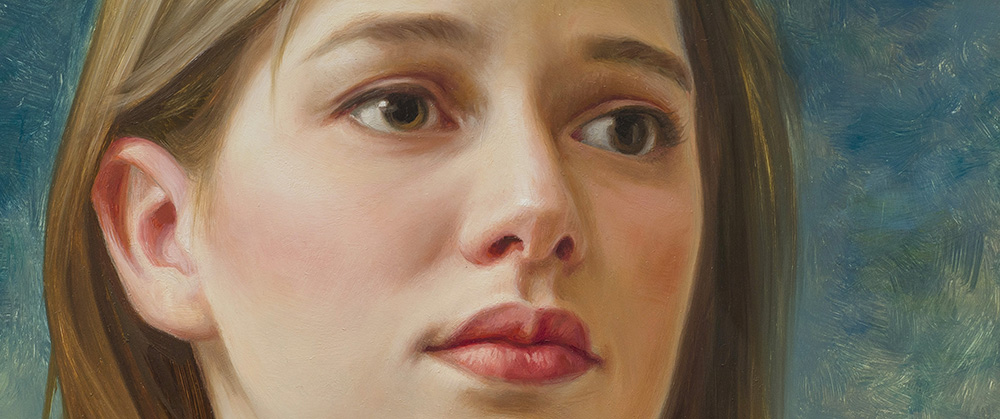
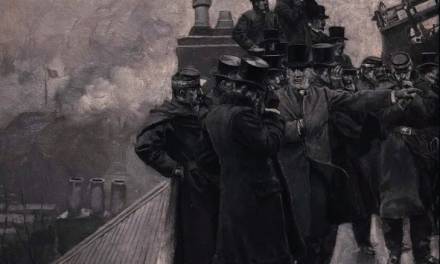
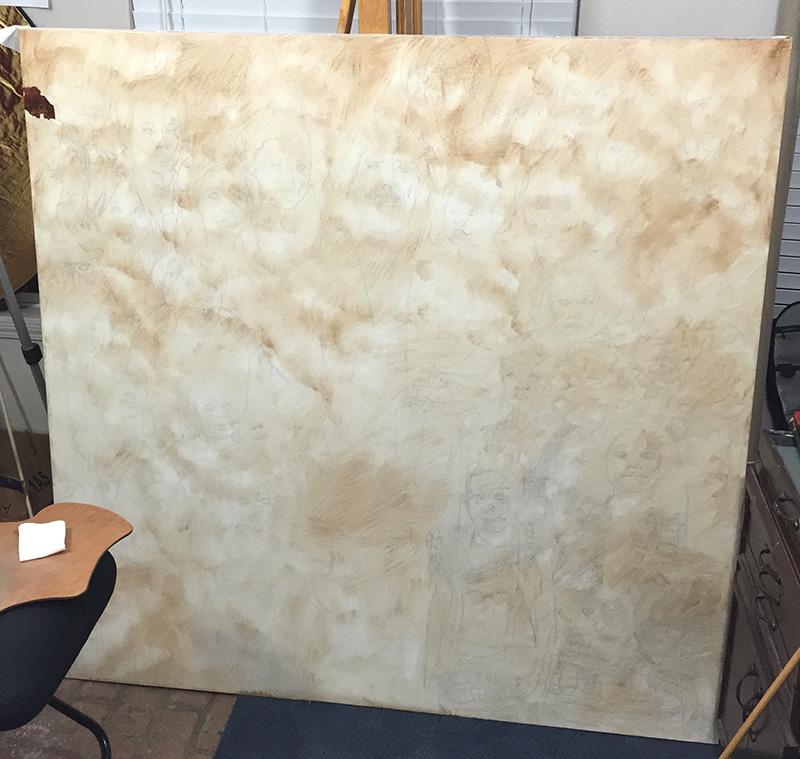



Thanks Howard.
Could you share some detail on thickness, weight, etc here please?
My fave surface is good-face marine ply-wood.
I imagine aluminium is far more resilient and lighter in weight though, which must be nice.
I love your “StephanieI” painting here, simple, calm, clear and very professional indeed.
I noted with pleasure your close attention in the area of the eyes- both of them, in contrast to your spelling of “aluminium” 🙂
I was just wondering about this with a friend. Thanks for sharing the details! Whenever it is I work up the courage to dive into oils, I may have to try this surface. It seems like it'd hold up very well to storage and transportation.
Thanks for sharing your experience with this material Howard. I too was very interested in using aluminum composite panels for a support, after reading about them online. Finding it hard to purchase small pieces, I actually bought a full sheet to experiment with, which was not cheap. Frankly, I can see it useful only for small works. The fatal flaw is that the material tends to warp in larger sizes, and can be bent or dented fairly easily. Hoping it would be the ultimate substrate for flat panels, I was extremely disappointed. I decided to stick with conventional hardboard, which is available in archival artist grade by companies such as Ampersand. I think that there is a reason why aluminum composite panels have not really caught on with artists.
Joel – Thank you for the input, that is good to know. I have only used up to 16×20, but my thought was that you could cradle it like you would hardboard at larger sizes… but then you lose some of the convenience, though it will be a more stable substrate than hardboard. It can definitely be dented and bent but I haven't found it easy to do either, at least not when handling with the same care I would give a canvas or hardboard panel.
What size did you work at that you found problematic? Thanks again for sharing. It is an interesting surface to work on, even if only for smaller sizes.
Tom – I am always forgetting how to spell 'colour', 'aluminium' and other such words. I 'apologise' for my 'behaviour'. 😀
The panels are pretty light. 370 grams for an 11″x14″. 1/8 inch masonite is 545 grams. The are panels are 3mm thick, that I am using, but you can get it up to 6mm.
Here is a link to the sell-sheet: http://www.laminatorsinc.com/sign-panels/products/omega-bond
When I purchased the full size sheet, I had the company cut several 18×24 pieces from it. I had those pieces leaning against the wall, and they soon sagged under their own weight! I expected them to remain reasonably flat, but they did not. So 18×24 might be the threshold for warping. I also found that I could grab the edge, and without too much force, bend it, pretty much permanently ruining its formerly straight edge. The aluminum part is very thin, and being metal, stays that way when it bends. No substrate is perfect, but for me, I prefer traditional hardboard panels.
Are you using the 6mm or 3mm thickness ? I have had no problem with warping with the 6mm 20×24 ACM. It is very strong.
That is good to know. Thank you Joel!
Love the post Howard. But tell the youngin' to list shipping fees on the auction.
I met a guy at this years IX (I think his name was Mike) who was also painting on aluminum. He said is was intended for signage as well. His paintings, which were really beautiful, had an amazing glow to them. I believe it was due to the metallic surface coming through.
Have you messed around with the notion of clear gesso perhaps? Could be cool.
Shipping is included in the price actually. When you click on an item from the main store page, it says 'free shipping' in red to the left and beneath the 'Buy Now' button as well as 'FREE' in the shipping section.
With the panels I have, they are coated with a very bright white polyester, that is quite bright. I think it adds a luminous quality. You can get the panels with only one side coated so you could paint right on the aluminum. I haven't done that yet. I don't know if it requires any special preparation to do so. Going to give it a try. 🙂
Thanks for this Howard. I have noticed other artist using aluminum panels lately and have wondered.
As far as you know can they be cut without causing separation of layers or other problems by ourselves (Joel mentioned the company cutting them for him). That is one reason I have used masonite hardboard because I can cut to size myself.
Also is there a difference between ones bought through Natural Pigments and a sign company regarding artist archival?
Thanks
Hey! You can cut through without the layers separating. I work at Artefex and ACM panels are all that we make! There may be some difference depending on the brand of ACM you use and how you process it afterwards (sanding, priming, etc.)
https://www.artefex.biz/
So when are the are pieces getting listed?
I generally sell at shows or word of mouth or to previous collectors that inquire, but I will be listing some of the painting sketches and finished pieces on my site soon. If you are interested before then, you can email me at fineart at howardlyon.com for prices. Thank you Tim!
I had an photo I shot of a roaring fire in our fireplace printed on a sheet of dibond and now use it for an insert to keep the draft out when the fireplace is not in use. I chose dibond since it is a good insulator, and I can stick it in there while the last embers are still smoking a bit (and thus the flu is still open and just sucking out heat).
I had an photo I shot of a roaring fire in our fireplace printed on a sheet of dibond and now use it for an insert to keep the draft out when the fireplace is not in use. I chose dibond since it is a good insulator, and I can stick it in there while the last embers are still smoking a bit (and thus the flu is still open and just sucking out heat).
I have cut them with a scroll saw. I didn't have any separation of the layers. I had a new blade in for metal cutting and it cut right through it. I haven't used the Natural Pigments panels, but I suspect they are the same as a sign company, maybe cleaned up (the edges are sharp when they are cut). The reason I think they are the Di-Bond panels is I have only found two manufacturers of the panels and the Di-Bond have one side coated, like the Natural Pigments panels. The ones my son sells are Omega-Bond panels, that are coated on two sides. Those two brands are the only ones out there as far as I know.
On a side note, they both come in different colors if you wanted to buy grey or black or another basic color. The grey might be handy!
I am so surprisd with that painting on aluminum, it looks really well and coulours are very beutiful, congratulations
I've been researching about using aluminum panels for some months. I was really in doubt of painting directly on the polyester surface (after delicately scuffing it) or, on the other hand, priming it with gesso. But I've seen this painting of yours (Stephanie) and it looks so beautiful, for itself, most of all, but also with a polished and pleasant surface. How long have you painted it? Any archival issues so far? Thank you.
Elisane Reis
http://www.elisanereis.com
Any info on best way to cut this board……..I have used this to put a roof on the garden shed..I need to paint it now.. any ideas on a paint to use..take into consideration it’s outside and needs to bond..
Thanks for explaining that I should also consider the moisture on the surface of the panels when painting over aluminum materials. I’d like to find a good aluminum supplier soon because I plan on getting a large garden shed built soon. I think that having it be made out of light materials would be ideal.